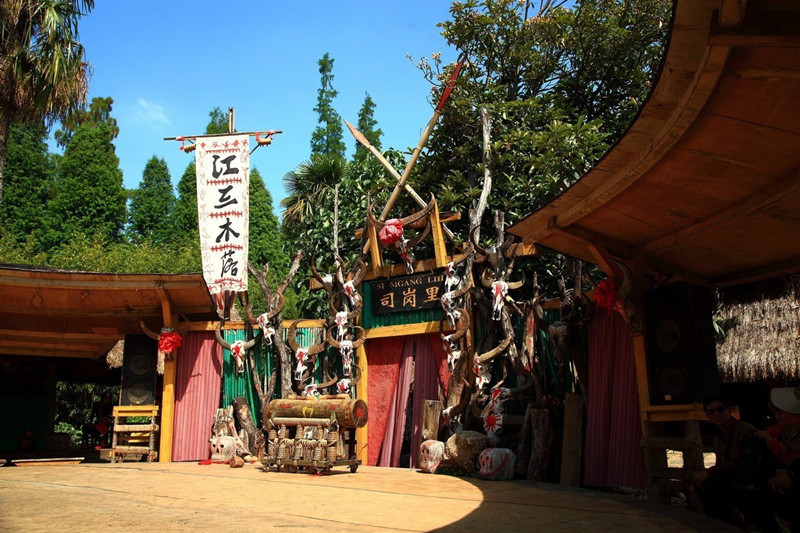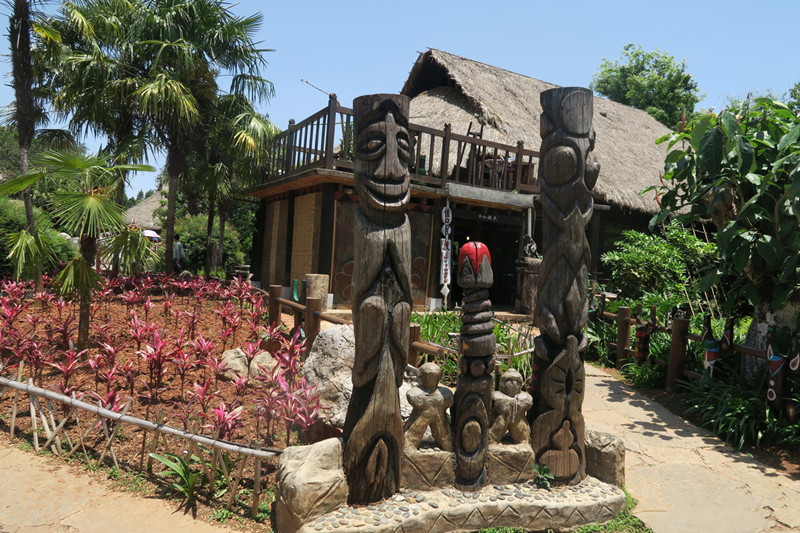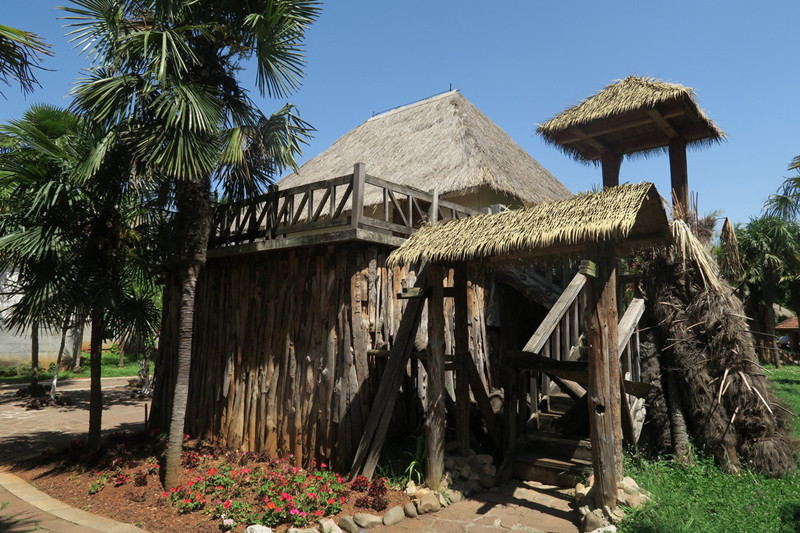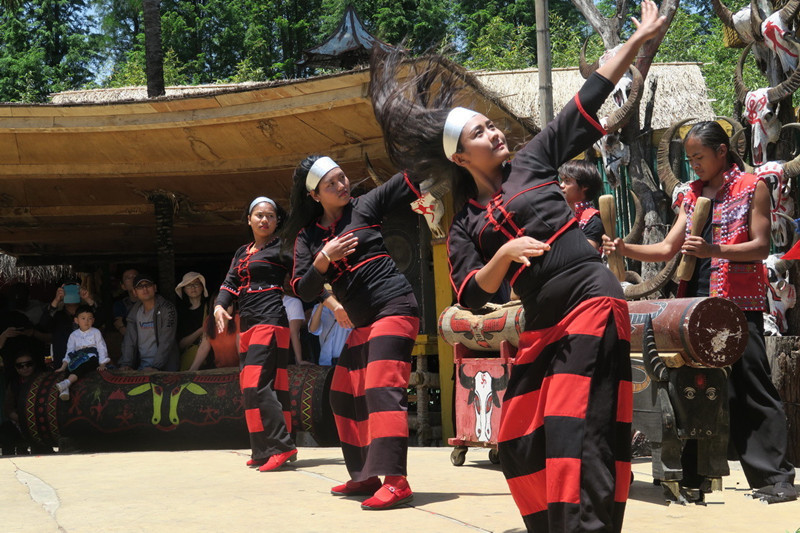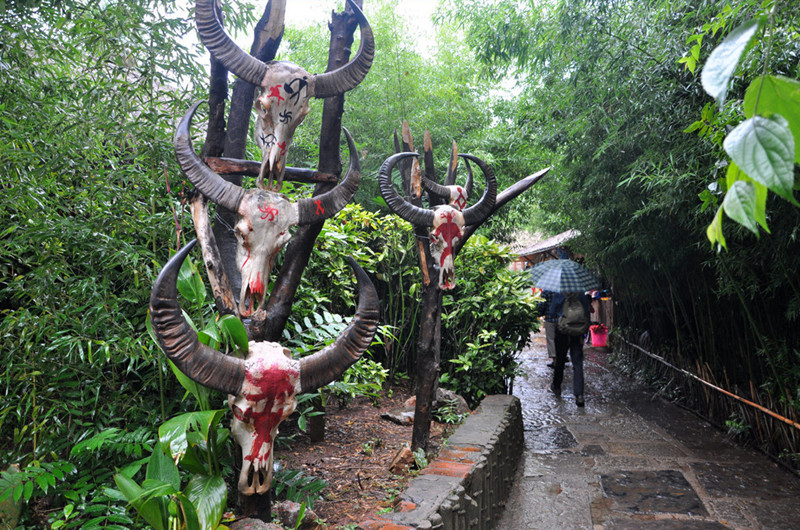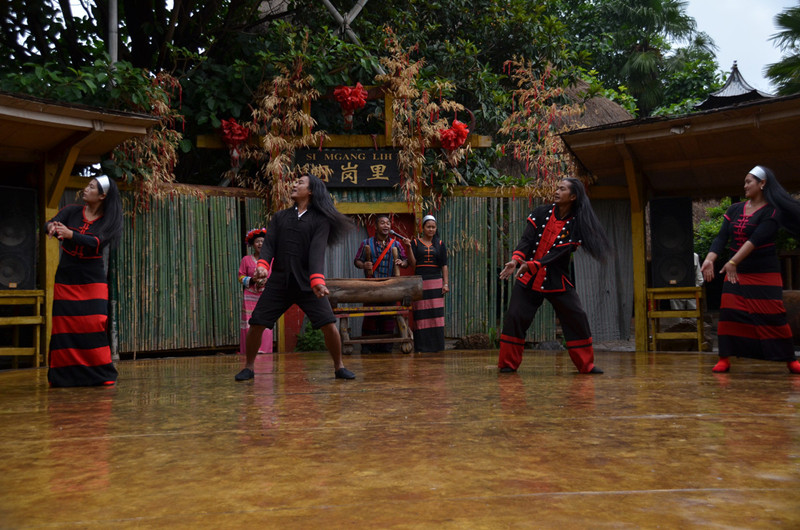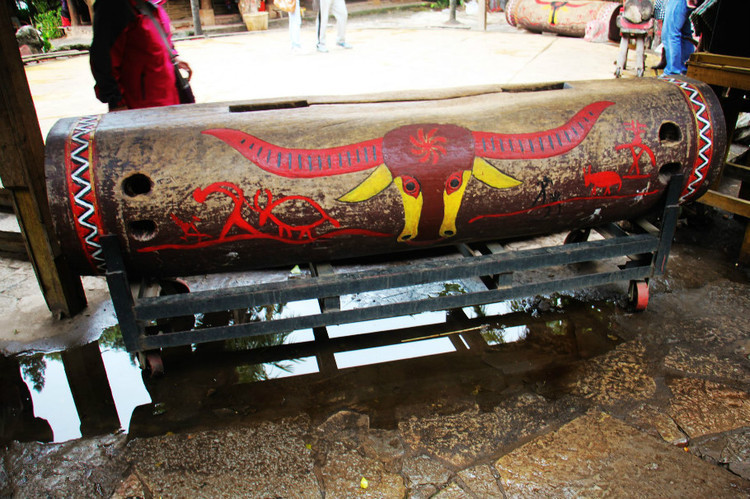Village of Wa Ethnic Minority in Yunnan Ethnic Villages, Kunming
Introduction to Yunnan Ethnic Villages
Yunnan Ethnic Villages (云南民族村), located on the southwestern outskirts of Kunming City (昆明市), by the shores of Dianchi Lake (滇池), covers an area of 89 hectares. It serves as a window for showcasing the social and cultural customs of 26 ethnic groups in Yunnan Province (云南省). The village is a national AAAA-level tourist attraction, a national base for ethnic culture under the State Ethnic Affairs Commission, and one of the first contact points for ethnic work in China.
Since its opening in February 1992, Yunnan Ethnic Villages has vividly displayed the architectural art, traditional songs and dances, clothing, religious beliefs, and living customs of various ethnic groups in Yunnan. National intangible cultural heritage festivals, such as the Torch Festival (火把节), Water Splashing Festival (泼水节), and Munao Zongge Festival (目瑙纵歌节), are celebrated here. Over 30 national and provincial intangible cultural heritage items are exhibited, including the Wooden Drum Dance (木鼓舞), Guozhuang Dance (锅庄舞), and traditional folk songs like the Lisu Folk Song (傈僳族民歌) and Yi Folk Song “Haicai Tune” (彝族海菜腔). More than 10 traditional crafts, such as the Husa Knife-making Technique (户撒刀制作技艺), Jianchuan Woodcarving (剑川木雕技艺), and Yi Embroidery (彝族刺绣技艺), are also on display.
The Wa Ethnic Minority
The Wa people (佤族) are a unique ethnic group found mainly in Yunnan, with a population of 400,000. They are primarily concentrated west of the southern section of the Lancang River (澜沧江), in places like Cangyuan Wa Autonomous County (沧源佤族自治县) and Ximeng Wa Autonomous County (西盟佤族自治县). The Wa Wooden Drum Dance (佤族木鼓舞) is characterized by strong and vivid rhythms, and a wild, robust style. During the dance, Wa women swing their long hair gracefully, and their movements are bold and energetic. The annual rituals, such as bull sacrifices, rice pounding, and weaving traditional cloth, are full of life and deep cultural significance.
Wa Village in Yunnan Ethnic Villages云南民族村–佤族村寨
Wa Village (佤族寨) is located at the southeastern corner of “Cuiyi Island” (翠漪洲). The village features traditional stilted houses with thatched roofs, Bull Head Square (牛头广场), Spirit Square (神灵广场), Sigangli Stone Sculptures (司岗里石雕), and granaries. Bull Head Square is the traditional site for the ancient Wa bull sacrifice ceremonies. At the center of the square stands a bull horn, which represents the village’s central pillar. In front of the square are two stone statues, symbolizing the male and female ancestors of the Wa people. These statues are known as “Mu Yiji” (木依吉) and “A Yi’e” (阿依娥), the most revered figures in Wa mythology.
Spirit Square reflects the Wa people’s belief in animism, the idea that all things possess a spirit and that the soul never dies. The two stone figures in the square symbolize this belief and the Wa’s reverence for their ancestors.
Architectural and Cultural Highlights
The Wa village in Yunnan Ethnic Villages is designed with clusters of stilted houses featuring thatched roofs. The buildings are arranged around key cultural spaces such as Bull Head Square and Spirit Square. In Bull Head Square, the center is marked by a bull’s horn, representing the symbolic pillar of the village. The statues of “Mu Yiji” (木依吉) and “A Yi’e” (阿依娥) reflect the spiritual reverence the Wa people hold for their male and female ancestors, and the Spirit Square conveys their animistic belief system.
Traditional Festivals of the Wa People
- New Fire Festival (新火节): This is the Wa people’s celebration of the new year, symbolizing the farewell to the old and the welcoming of the new.
- Sowing Festival (播种节): Held around the 15th day of the third lunar month each year, this festival marks the beginning of the planting season.
- New Rice Festival (新米节): Celebrated in mid-August of the lunar calendar, this festival is dedicated to the first harvest of the year.
In addition to these, the Wa Wooden Drum Festival (木鼓节) was newly created in 2003 in Ximeng Wa Autonomous County (西盟佤族自治县), while the Sigangli Carnival (司岗里狂欢节) was introduced in 2004 in Cangyuan Wa Autonomous County (沧源佤族自治县).
Cultural Significance and Tourism
The Wa ethnic culture is vividly presented in Yunnan Ethnic Villages, allowing visitors to witness the life, customs, and history of this vibrant group. The cultural elements in the Wa village not only represent the past but are also a living display of their traditions. The traditional stilted houses, the lively festivals, and the striking wooden drum dance offer a deep dive into Wa culture.
For tourists, the Wa Village in Yunnan Ethnic Villages offers an immersive experience, where they can explore ancient customs, witness bull sacrifice ceremonies, and even participate in traditional Wa dances. The vibrant displays of art, architecture, and festivals make it a key highlight for understanding the diverse cultural landscape of Yunnan.
Key Attractions:
- Wa Village (佤族寨)
- Bull Head Square (牛头广场)
- Spirit Square (神灵广场)
- Sigangli Stone Sculptures (司岗里石雕)
- Wa Wooden Drum Dance (佤族木鼓舞)
- Mu Yiji and A Yi’e Statues (木依吉和阿依娥雕像)
- New Fire Festival (新火节)
- Sowing Festival (播种节)
- New Rice Festival (新米节)
- Wa Wooden Drum Festival (木鼓节)
- Sigangli Carnival (司岗里狂欢节)
